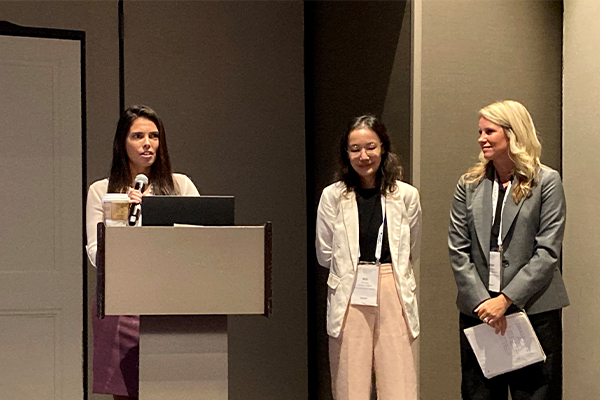
From September 17- 20, the National Association of Pretrial Services Agencies (NAPSA) hosted their annual conference at the Marriott in New Orleans. This four-day event brought together researchers, law enforcement, judges, attorneys, pretrial services staff, and behavioral health partners to advance pretrial’s impact across the United States.
The Crime and Justice Institute (CJI) was represented throughout the conference via special events, presentations, and panels. Below are several highlights from the event.
Exploring Pretrial Services in the US
CJI staff Jess Hickman, Becky Altman, and Mei Yang presented the results of a national survey that CJI and NAPSA launched to discover what pretrial services looks like today. Agency leaders answered questions about daily operations, release and supervision practices, outcomes and performance metrics, ongoing challenges, and priorities for the future.
Responses from 135 pretrial services directors show consistencies and common trends across the 33 states represented:
- Agencies have broad definitions of success, including court appearance, public safety, staff retention and wellness, and providing appropriate services for clients.
- Pretrial supervision is the most common release option available, yet research on the impact of supervision is still limited.
- The most common challenge for agencies is staffing: hiring, retention, and burnout.
The responding pretrial leaders also share their top policy priorities for the future:
1. Reduce or eliminate the use of financial bonds
2. Implement less restrictive conditions
3. Improve access to services and resources
Facilitating Behavior Change
CJI Deputy Director Valerie Meade, in partnership with National Institute of Corrections (NIC) Correctional Program Specialist Katie Green, introduced a new and improved training curricula on facilitating behavior change. Although previously focused on community supervision, the training has expanded to address institutional corrections and pretrial supervision.
Meade and Green spotlighted aspects of the facilitating behavior change model that increase the chance of successful outcomes, including fairness, empathy, objectivity, and supporting prosocial behavior. The training teaches skills such as active listening, giving feedback, and effective use of authority, reinforcement, and disapproval.
In the upcoming fiscal year, NIC will expand free training opportunities for community supervision agencies, including pretrial and institutions. Solicitations for interested sites to apply will be posted on NIC’s website in early 2024.
Data-Driven Culture Change
CJI staff member Noah Atchison, alongside CJI Vice President Spurgeon Kennedy, presented the impact of pretrial changes in Tarrant County, Texas. Beginning in 2017, Tarrant County reevaluated their pretrial release process and how bail was set.
Kennedy, who led the assessment, explained the process of integrating new policies and risk assessment. He offered important advice to audience members on these efforts: “If you don’t treat it as a change in culture, it will fail.”
The team successfully generated buy-in from system stakeholders and implemented meaningful and sustainable change. Among the improvements was a switch to the Public Safety Assessment (PSA) risk assessment. At first skeptical of risk tools, community leaders were successfully convinced of their value. Kennedy emphasized, “You have to change the way people think about what they do.”
Atchison also stressed the importance of culture change, and showed how data can help drive this change. He noted that reviewing data on outcomes, processes, and opportunities can clearly show the impact of new policies, get everyone on the same page, and lead to more effective decision making.
Fireside Research Chat
Barbara Pierce, CJI Director of Justice Initiatives, hosted a fireside chat with Dr. Christopher Lowenkamp and Dr. Alex Holsinger. Moderated by Jessica Hickman, Lowenkamp and Holsinger delved into their years of research on pretrial processes. Both panelists stressed the importance of first defining the goal of pretrial services and supervision, testing interventions, and asking the right questions to discover what works.
Holsinger provided an important reminder to attendees: “We err on the side of caution, and that’s not always the smartest way to do things.” The panelists encouraged pretrial practitioners and leaders to move beyond the tendency to adopt what works for probation and test different interventions that might be effective for the pretrial phase.
When asked for next steps, Lowenkamp reminded attendees to define the problems and systematically evaluate potential solutions. “Do more research. Identify the problem. Develop something that works.”